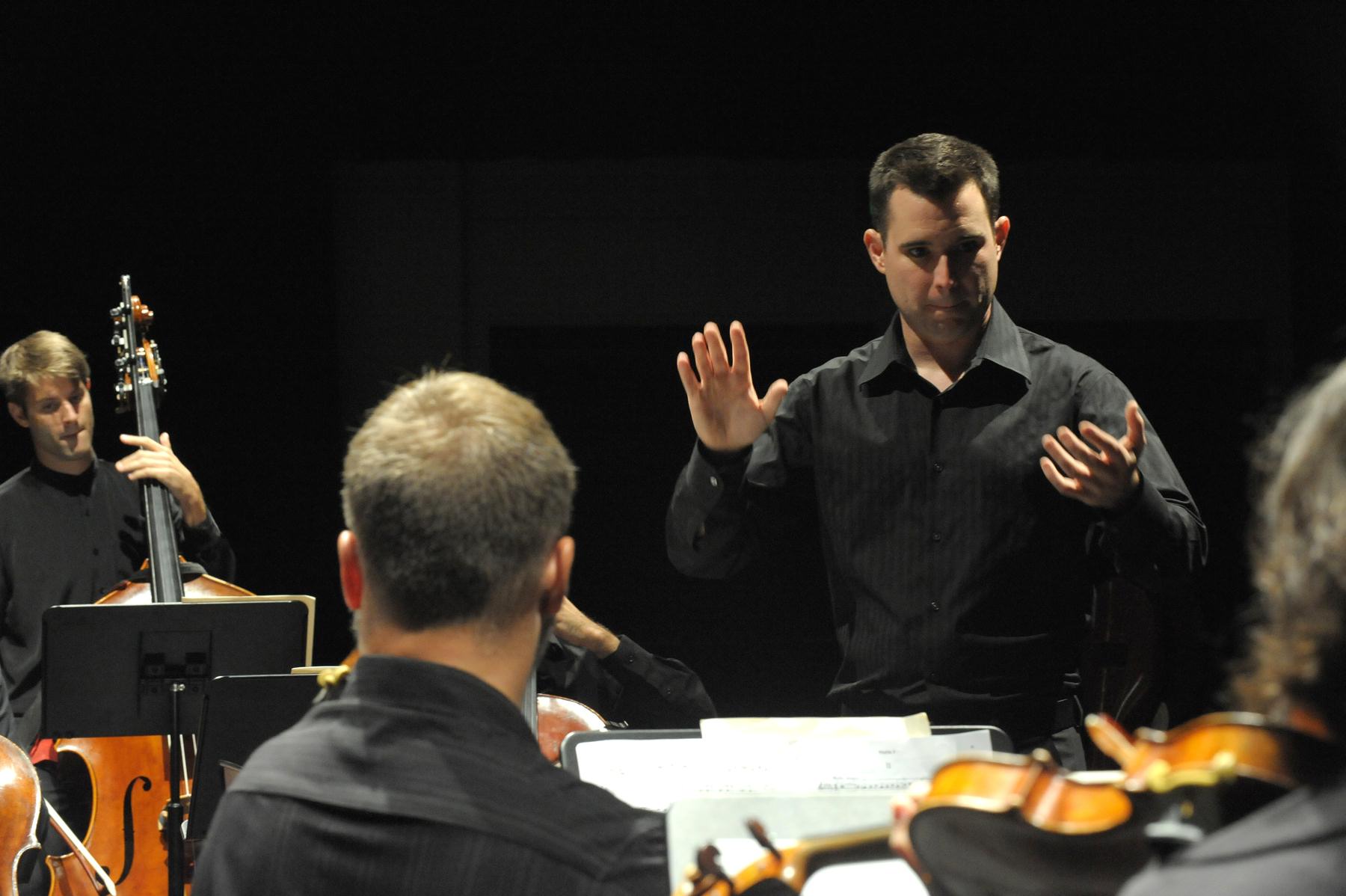Mozart-Salieri smackdown closes Firebird’s debut season in style
 The third and final program of the Firebird Chamber Orchestra’s inaugural season served up just the kind of a smart, stylish, concise — less than ninety minutes — music-making that has characterized conductor Patrick Quigley’s concerts with his new ensemble.
The third and final program of the Firebird Chamber Orchestra’s inaugural season served up just the kind of a smart, stylish, concise — less than ninety minutes — music-making that has characterized conductor Patrick Quigley’s concerts with his new ensemble.
Sunday night’s concert benefited from the Firebird’s performing in the Adrienne Arsht Center’s Knight Concert Hall, the first time the group has appeared sans choir in the big house. Whatever intimacy and hip Playboy-After-Dark ambiance the Peacock rehearsal studio may have afforded, there’s no substitute for hearing a chamber orchestra in a genuine concert venue. The late Russ Johnson’s magnificent acoustic bestowed a presence and depth to the Firebird’s sonority only infrequently heard previously.
The concert began with a vigorous take on the Allegro opening of Mozart’s Eine kleine nachtmusik — with some nimble dynamic marking and detailing —before moving into the main program, an intriguing, post-Amadeus revisionist take on music of Mozart and his supposed nemesis, Antonio Salieri.
As Quigley noted in his witty, user-friendly verbal notes, the Mozart-Salieri rivalry and the calumny that Salieri poisoned his more talented younger colleague, may have made a compelling play and movie but have little basis in reality. Doubtless, there was competition between the two men, as existed among all composers at the Vienna court, but, far from an embittered, homicidal nut, Salieri was generous in his praise of Mozart’s music, even conducting his works on occasion.
Much of Salieri’s ouput is in opera, with scant non-vocal symphonic music to speak of. As demonstrated by the works presented Sunday, Salieri’s music is attractive enough, though even with energetic and incisive advocacy by Quigley and his players, Salieri’s invention doesn’t rise to the level of his best contemporaries, much less Mozart.
 Young soprano Kathryn Mueller made a strong case, however, for reviving Salieri’s sacred music with her bravura rendition of Mary Magdalene’s strangely virtuosic aria, Ai passi erranti, from La passione di Gesu Cristo. The flights of stratospheric brilliance are decidedly odd in a text that tells of Christ’s followers’ desolation after his crucifixion, but the coloratura showpiece was thrown off with gleaming facility by Mueller.
Young soprano Kathryn Mueller made a strong case, however, for reviving Salieri’s sacred music with her bravura rendition of Mary Magdalene’s strangely virtuosic aria, Ai passi erranti, from La passione di Gesu Cristo. The flights of stratospheric brilliance are decidedly odd in a text that tells of Christ’s followers’ desolation after his crucifixion, but the coloratura showpiece was thrown off with gleaming facility by Mueller.
The other Salieri works left a more mixed impression. The wind writing in his overture to La Grotta di Trofonio has its charming moments, but the music tends to inhabit a cheerful, rustic quality between Haydn and Mozart without displaying either man’s subtlety or harmonic daring.
So too, the brief Sinfonia in D major, La Veneziana , is pleasant, but the seams quickly show its creator as a second-rate talent: the foursquare counterpoint in the Andantino, the banality of the hunting-horn finale, and the whiff of blandness in the opening movement’s development which a more gifted hand would have built with greater ingenuity. That said, Quigley and his players gave Salieri’s works polished and worthy performances.
The concert was rounded off with two better and better known works by Mozart. Mueller returned to show herself equally assured and agile in the outer sections of Mozart’s motet, Exultate, jubilate. But why in the world fail to perform the central Andante section, which supplies the necessary expressive depth and contrast?
Whatever the historical precedent, twenty players still seems awfully thin for a late Mozart symphony. Mozart may well have conducted performances with similarly small ensembles, but that doesn’t necessarily mean he preferred doing so. In his letters, Mozart was clearly delighted when he conducted larger orchestras and always added more players and winds whenever he had the opportunity.
Quigley is not wired in such a way as to lead a routine reading of anything, and his vital, lean and dramatic performance made a fair case for tackling Mozart’s Symphony No. 40 with small chamber forces. There were moments, as in the development section of the first movement and the final Allegro, when the textures seemed to require more heft from the strings. Yet in the middle movements, the lighter forces contributed to a keener, more focused expression, with an elegant Andante and fleet Menuetto.
Quigley’s brand of stylish, thoughtful music-making showed in his well-chosen tempos, scrupulous balances and artful underlining of wind lines. The playing was energetic and mostly assured, yet small forces mean merciless exposure and two brief lapses in string ensemble proved jarring in the final movements.
Posted in Uncategorized
Leave a Comment
Mon Jan 19, 2009
at 11:19 am
No Comments